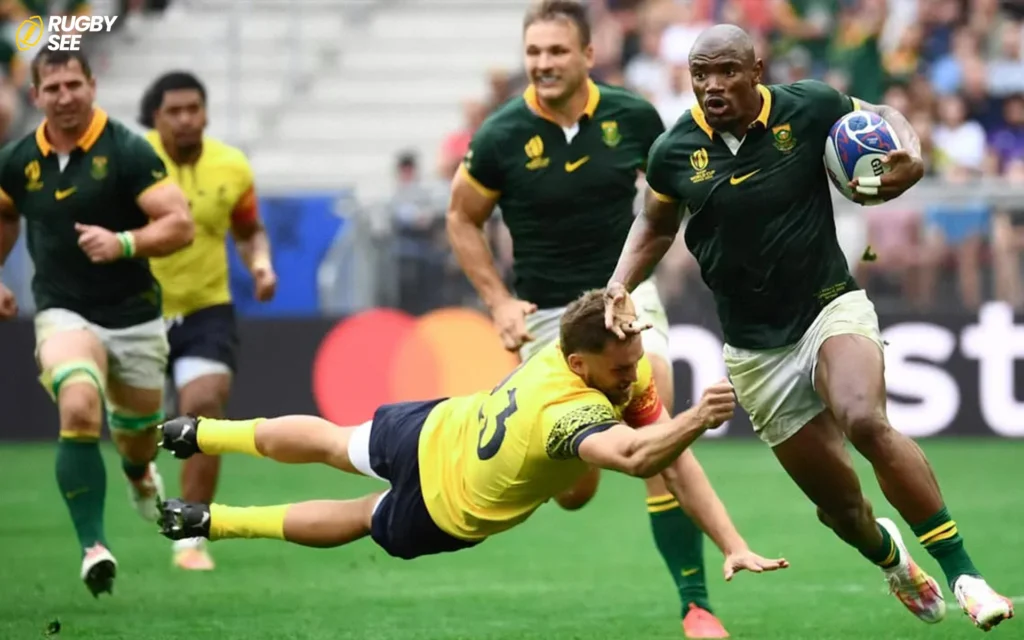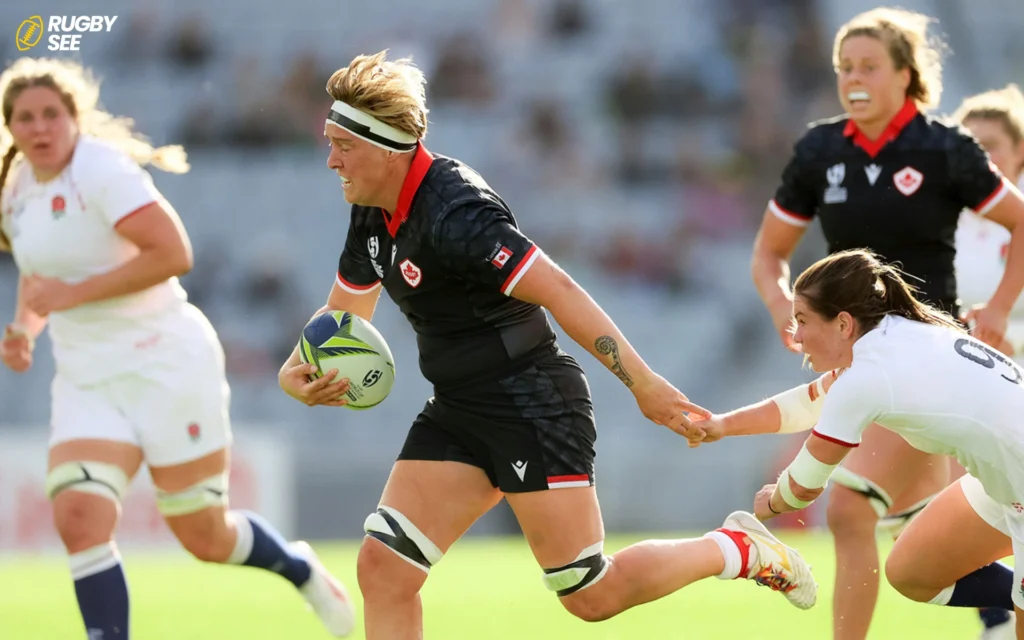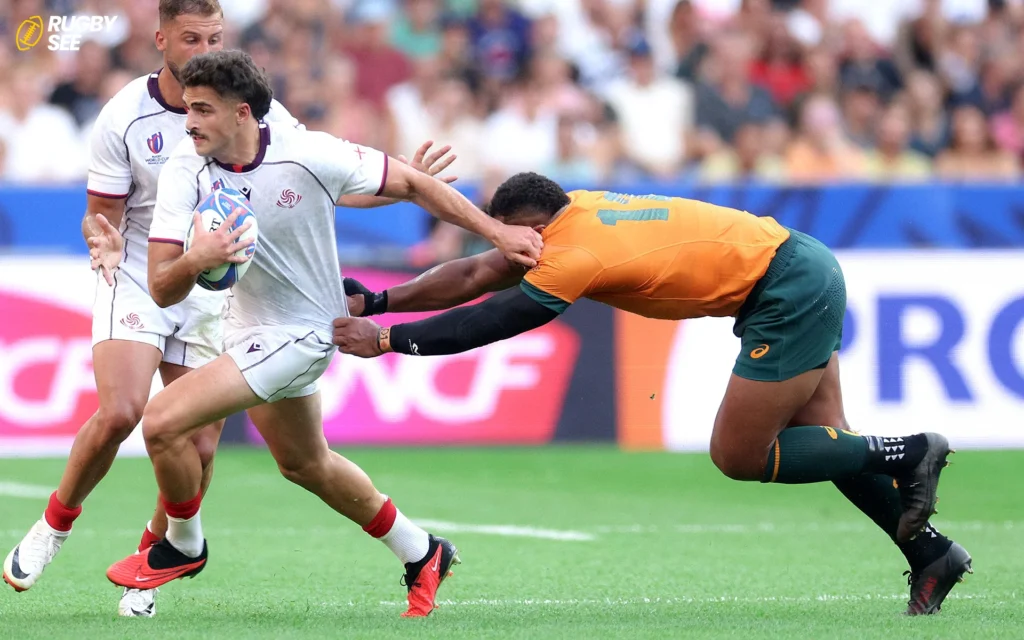Have you ever watched a rugby match and wondered why all the players seem to have incredibly large feet? This is not just an accident or a mere physical feature. There is a compelling reason behind it. Rugby, known for its physical demands and intense contact, requires players to possess a combination of strength, power and endurance. In this article from Rugbysee, we’ll explore the reasons why rugby players focus on building significant leg strength and how it helps them perform on the field.
The Foundation of Power
Rugby players’ legs are their powerhouse, providing the essential force needed for sprinting, jumping, tackling, and pushing during a match. The game’s nature calls for explosive strength, which originates from the lower body. Here’s how big legs support these needs:
1. Sprinting and Agility
Rugby involves a lot of running, often with sudden changes in direction. Strong, muscular legs enable players to sprint faster, change direction quickly, and evade tackles. The quadriceps, hamstrings, and calves play crucial roles in accelerating, decelerating, and maneuvering around opponents.
2. Tackling and Defensive Moves
Tackling is a fundamental aspect of rugby, requiring players to withstand and deliver high-impact forces. Big legs absorb the impact better and provide the stability needed to execute effective tackles. Moreover, leg strength allows players to maintain their balance and position when facing an opponent’s tackle.

3. Scrum and Maul
The scrum and maul are critical components of rugby, where players engage in a battle of strength and technique to win possession. In these scenarios, leg strength is paramount. Strong legs help players push against the opposition more effectively, giving their team an advantage in these contests.
4. Jumping and Lineouts
Lineouts are another area where leg power comes into play. Jumpers need explosive leg strength to lift off the ground and reach for the ball. The ability to jump higher than the opponents can be the deciding factor in winning possession during lineouts and if you want to know about wearing Gloves in Rugby read Can Rugby Players Wear Gloves.
Training for Strength
Rugby players undergo rigorous training regimes focused on building leg strength. These typically include:
- Squats and Deadlifts: Fundamental exercises that target the major muscle groups in the legs, contributing to overall lower body strength.
- Plyometrics: Exercises like box jumps and jump squats that improve explosive power, crucial for sprinting and jumping.
- Sled Pushes and Pulls: These exercises mimic the resistance faced during a game, improving endurance and strength simultaneously.
Nutrition and Recovery
Building and maintaining big legs isn’t just about training hard; it also involves proper nutrition and recovery. Rugby players consume a diet rich in proteins, healthy fats, and carbohydrates to fuel muscle growth and recovery. Adequate rest and recovery practices, including stretching, massages, and ice baths, help manage inflammation and repair muscle tissue, allowing for continuous strength and size development.
The Role of Genetics in Building Muscular Legs
While training, nutrition, and recovery are key elements in developing big legs, genetics also play a significant role. Some players are genetically predisposed to build muscle more efficiently, allowing them to gain size and strength in their legs more quickly than others. This genetic advantage can be seen in the varying body types across the rugby team, where some players naturally have larger frames and muscle mass.
The Psychological Advantage of Big Legs
Beyond the physical benefits, having big legs can also provide a psychological edge. In a sport as physically demanding and intimidating as rugby, the appearance of strength can be just as important as actual strength. Players with big, muscular legs can intimidate opponents and boost their own confidence on the field. This mental advantage can influence the outcome of tackles, scrums, and one-on-one contests throughout the game.

Tailored Training Programs
Rugby players’ training programs are meticulously designed to enhance their leg strength and size, tailored to their specific role on the team. Forwards, who are involved in the brunt of physical confrontations and need to push against opponents in scrums, might focus more on raw strength and power. Backs, who require speed and agility to outmaneuver opponents, might concentrate on exercises that enhance explosive power and quickness. This tailored approach ensures that each player develops the leg strength necessary for their specific duties on the field.
The Evolution of Rugby Fitness
The importance of having big legs in rugby has grown as the sport has evolved. Modern rugby players are bigger, faster, and stronger than ever before, reflecting advances in sports science and training methodologies. This evolution has raised the bar for physical fitness, making big, powerful legs a standard among professional players. The focus on leg strength and size is a response to the increasing physical demands of the game, which shows no signs of slowing down and if you want to know about Rugby players Earning read How much rugby union players earn per week.
Emphasizing Mobility and Flexibility
While building big legs is crucial, rugby players also need to maintain mobility and flexibility to perform at their best. Strength without flexibility can lead to a decrease in performance and an increased risk of injury. Therefore, players incorporate stretching and mobility exercises into their routines, ensuring that their muscles remain flexible and their joints move freely. This balance between strength and flexibility is essential for maximizing performance on the rugby field.

In rugby, the legs are much more than just a foundation; they are the engine that drives a player’s performance. Big, strong legs are not merely for show; they are a necessity for the speed, power, endurance, and agility required in rugby. Through targeted training, proper nutrition, and dedicated recovery practices, rugby players develop their legs to withstand the demands of the game, giving them the edge they need to excel.
Whether you’re a rugby fan or an aspiring player, understanding the importance of leg strength in rugby highlights the dedication and hard work these athletes put into their training. It’s a testament to the physical and strategic demands of the sport, where every aspect of a player’s physique can contribute to their success on the field.










